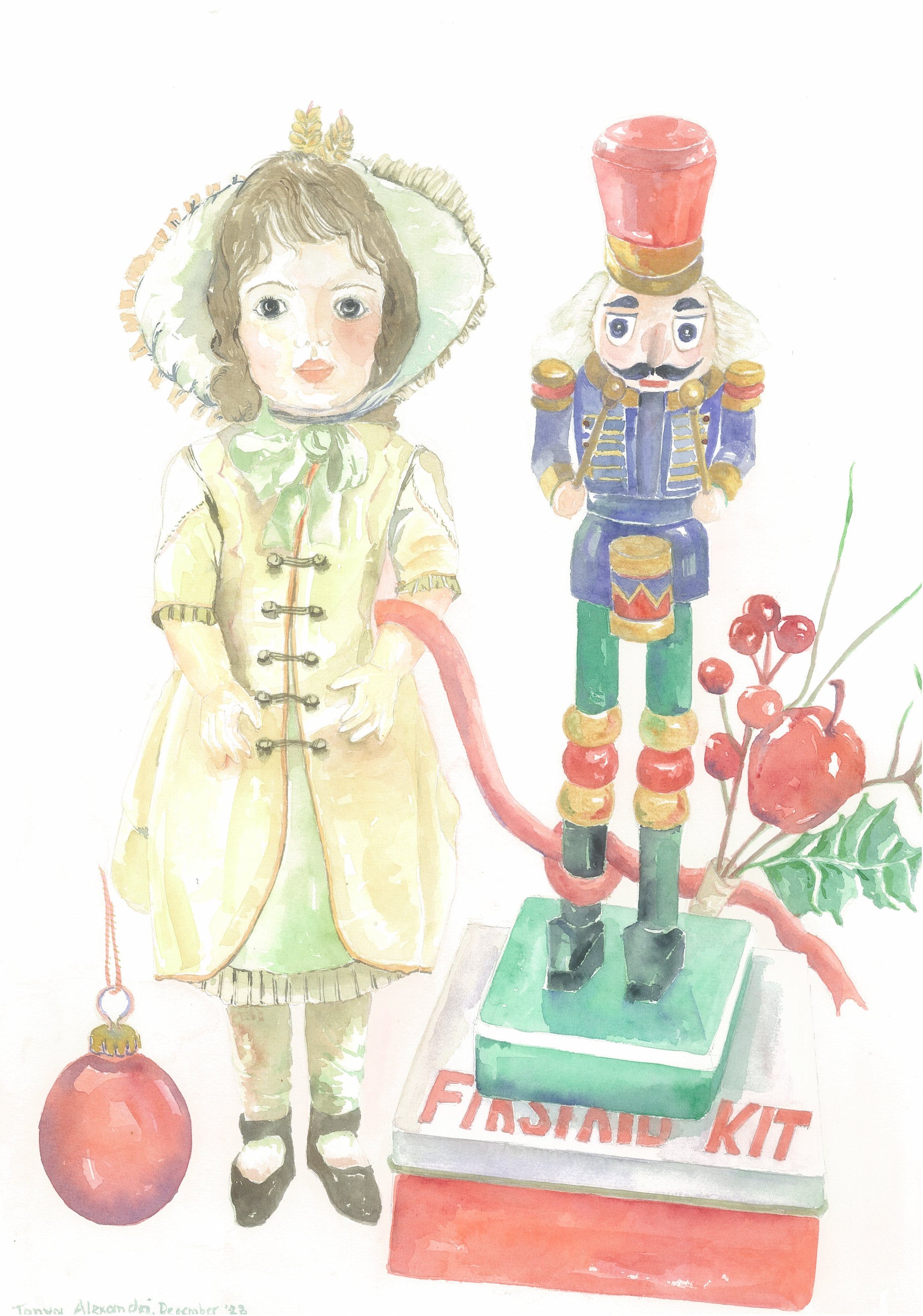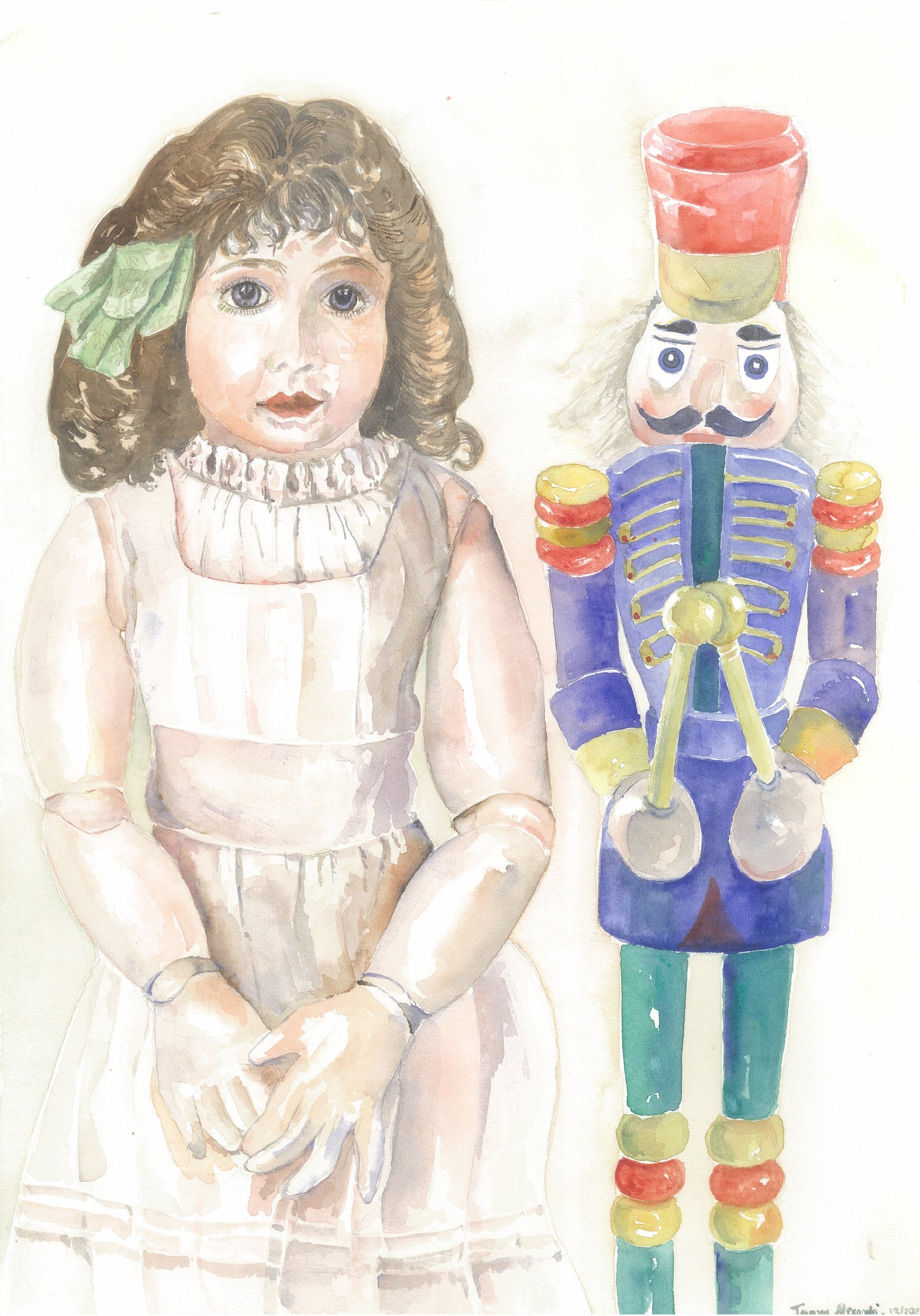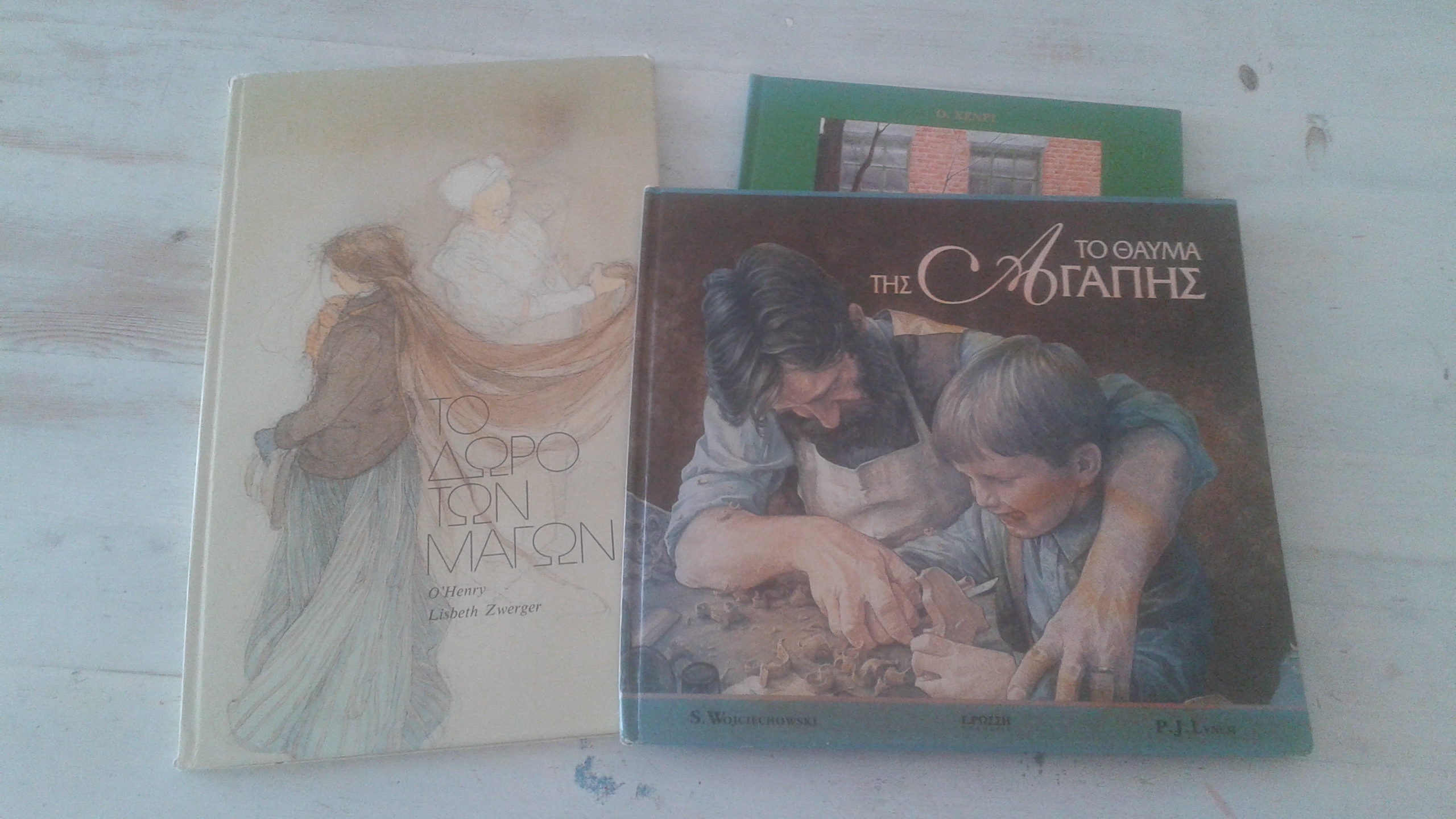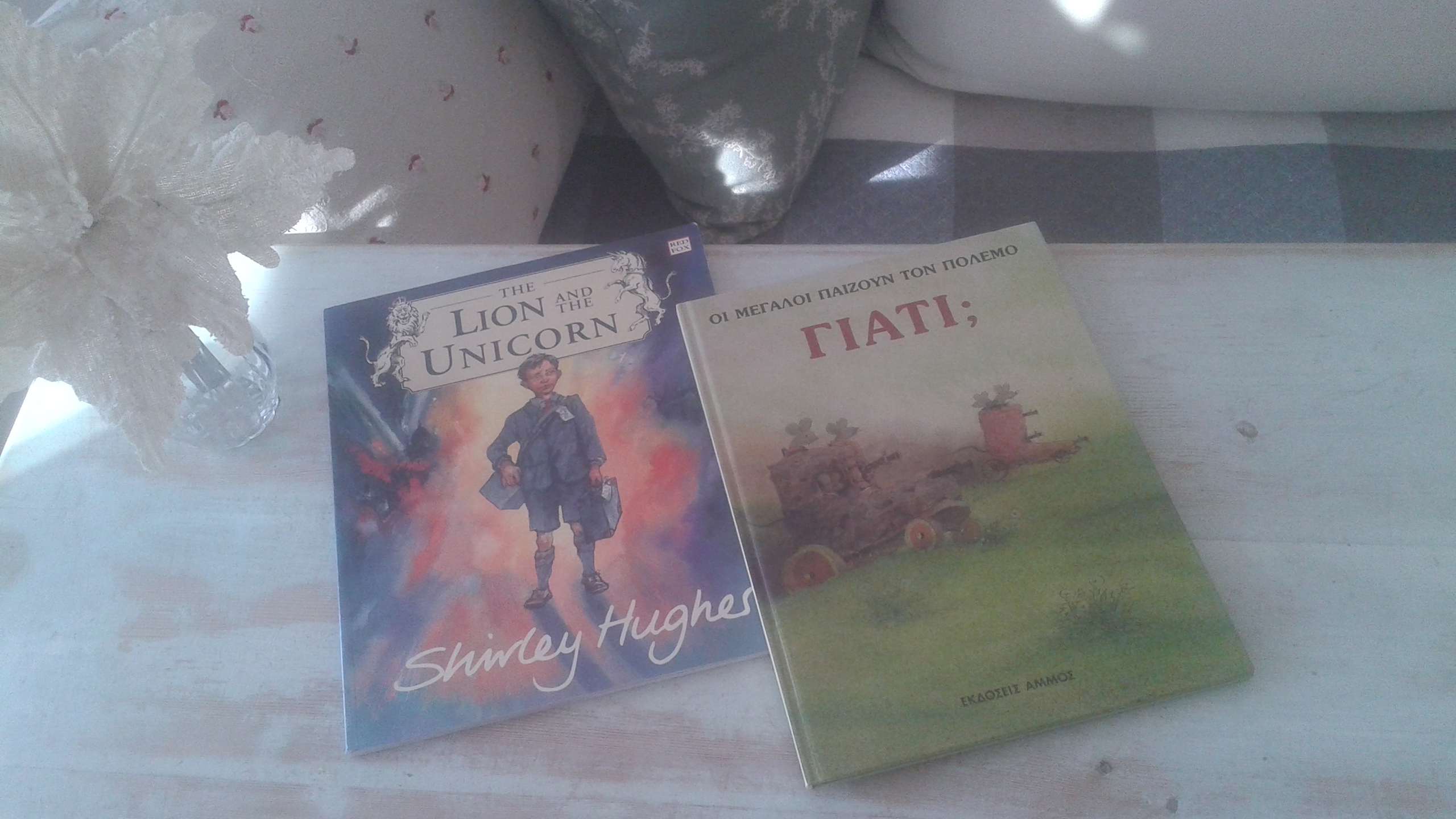End of the year post
“Stone did not become apple. War did not become peace.
Yet joy still stays joy. Sequins stay sequins. Words still bespangle, bewilder…” Jane Hirshfield
“The boundary to what we can accept is the boundary to our freedom.” Brach, Tara
“There is something wonderfully bold and liberating about saying yes to our entire imperfect and messy life.” Tara Brach
“…. competence, autonomy, and relatedness, have been identified…… as these fundamental psychological needs that tend to lead to more intrinsic motivation….” Being Well podcast
This is the last post for this year. After considering various ideas I finally decided to write about Tara Brach’s book, Radical Acceptance, which I’ve been reading, refer to a few of my favourite children’s books, provide a link to a Being Well episode on generativity and productivity, and include the poem Counting This New Year’s Morning: What Powers Yet Remain in Me by poet Jane Hirshfield, and two recent watercolours with a Christmassy spin…


I’ve been familiar with Tara Brach’s work and meditations on radical self-acceptance for several years, through articles and other material, and her online talks and meditations, but lately as I was thinking about the interdependence and tight link between psychological integration and acceptance I decided to buy the book. Tara Brach is a clinical psychologist and a renowned meditation teacher, and in this book she combines personal stories and concepts, case studies and meditation practices from her professional experience to create a map of a personal journey to more wholeness, presence and clarity. The book is also informed by Buddhist concepts and stories, but I think it can easily be read and used by people who are not familiar or interested in Buddhism. In my view, a lot of the value of the book lies in the exploration of our human experience in the moment and ways to work with our bodily experience and emotions, and awaken to our inherent worth amidst what is going on in our lives. In this book Brach rejects the notion that we are inherently flawed and deficient beings, and highlights the need to compassionately embrace ourselves and our lives, something that most of us have not been taught to do, at least in the West.
To be honest, I have been weary of the over focus of the self-help industry on acceptance, which to some extent, smacks of resignation and seems like an admonition to passively accept socioeconomic circumstances and dynamics and the way that things have always been. Sometimes it can sound like advice to people to accept their lot with a smile, without responding or rocking the boat. So whether it is bad treatment from others, inequity and marginalization of people, layoffs and decreases in wages or the further destruction of the environment by industries, to name just a few, we are advised to accept it all as inevitable and part of life.
In this book, Brach clarifies that Radical Acceptance is not self-indulgence or resignation or an excuse for withdrawal. It also does not mean defining ourselves by our limitations, nor does it make us passive. She says: “Radical Acceptance reverses our habit of living at war with experiences that are unfamiliar, frightening or intense.” She suggests that real acceptance is about fully acknowledging what is happening, feeling the emotions and sensations of the difficult or painful experience, which increase presence and clarity, reduce the possibility of our being hijacked by our emotions and creates space for a wiser or more helpful response. It can also facilitate healing and processing unresolved grief, and it allows us to let go of constriction in our bodies. Acceptance of our experience cuts through our psychological defenses like denial or dissociation or addictive behaviours and allows us to confront what we avoid or can’t bear to fully acknowledge. She writes: “Not only do our escape strategies amplify the feeling that something is wrong with us, they stop us from attending to the very parts of ourselves that most need our attention to heal. As Carl Jung states in one of his key insights, the unfaced and unfelt parts of our psyche are the source of all neurosis and suffering.”
There are twelve chapters in the book and I will briefly refer to a couple of them. Brach begins the book by discussing what she calls the trance of unworthiness that we all seem to experience to some extent, which she explains is rooted primarily in the notion of being unworthy and separate from others. She claims that feeling unworthy goes hand in hand with feeling undeserving, separate from others and separate from life. For some it can show up as pride, grandiosity or arrogance, which she believes is the flip side of the trance of unworthiness.
Moreover, she writes that the sense of unworthiness and insecurity keeps us from realizing dreams, and that “as we free ourselves from the suffering of “something is wrong with me,” we trust and express the fullness of who we are.” She explains that we waste our precious lives by carrying the belief that something is wrong with us, which can often be lodged deeply in our subconscious mind. However, she writes because it is often deeply entrenched in us it is not easy to let go and heal; therefore, awakening from the trance involves not only inner resolve, but also an active training of the heart and mind. She has found that through awareness practices, we can free ourselves by learning to recognize what is true in the present moment, and by embracing whatever we see with an open heart. This cultivation of mindfulness and compassion is what Brach calls Radical Acceptance.
Brach discusses how we live in a culture that breeds separation and shame, where we learn from early on in our families, schools, workplaces and other contexts that in order to belong we need to compete and prove our worthiness, where “someone is always keeping score.” This she writes is especially true in the West, where the cultural message is that something is fundamentally wrong with us and that basically we are flawed by nature and we don’t deserve to be happy, loved and at ease with life; therefore, ,we must strive hard to overcome our flaws by controlling our bodies, our emotions, our natural surroundings, and other people. We often project these feelings outward and make those we perceive as different from us the enemy, the Other. Brach writes that as we internalize this view of our inherently flawed nature, we become ensnared in the trance of unworthiness and we each develop a particular blend of strategies designed to hide our perceived flaws and compensate for what we believe is wrong with us.
Brach adds that believing that we are separate and incomplete, and, wanting and fearing are also part of evolution’s design to protect us and help us to thrive, but when they become the core of our identity, we lose sight of the fullness of our being, and we become identified with, at best, only a sliver of our natural being, “a sliver that perceives itself as incomplete, at risk and separate from the rest of the world. If our sense of who we are is defined by feelings of neediness and insecurity, we forget that we are also curious, humorous and caring. We forget about the breath that is nourishing us, the love that unites us, the enormous beauty and fragility that is our shared experience in being alive.”
In the second chapter, Awakening from the Trance: The Path of Radical Acceptance, she writes that maybe the biggest tragedy in our lives is that freedom is possible, yet we can pass our years trapped in the same old patterns as we get used to caging ourselves and gradually become incapable of accessing the freedom and peace that are our birthright Brach asserts that our way out of this cage begins with accepting absolutely everything about ourselves and our lives, by embracing with compassion our moment-to-moment experience. We become aware of what is happening within our body and mind in any given moment, without trying to control or judge or push down or distract ourselves.
She clarifies that this level of acceptance does not mean putting up with harmful situations or not seeking personal or social change. Instead it is an inner process of accepting our actual, present-moment experience. And it requires we feel our sensations, emotions, desires, sorrow and physical pain without resisting or judging. She writes: “Clearly recognizing what is happening inside us, and regarding what we see with an open, kind and loving heart, is what I call Radical Acceptance. If we are holding back from any part of our experience, if our heart shuts out any part of who we are and what we feel, we are fueling the fears and feelings of separation that sustain the trance of unworthiness. Radical Acceptance directly dismantles the very foundations of this trance.”
She describes how genuine acceptance consists of two parts: seeing clearly and holding our experience with compassion. Clear seeing is mindfulness, and it is the quality of awareness that recognizes exactly what is happening in our moment-to-moment experience, and going to the root or origin of our experience. We become more aware of the intentions that motivate our behavior and the consequences of our actions both on ourselves and others. Brach writes: “Our attentive presence is unconditional and open—we are willing to be with whatever arises, even if we wish the pain would end or that we could be doing something else. That wish and that thought become part of what we are accepting.” Compassion involves tenderness towards our self and honors our experience as it is. It also makes our acceptance wholehearted and complete.
Brach also clarifies that the inquiry process suggested here is not a kind of analytic digging, in order to understand what caused a current situation, rather the intention of this kind of inquiry is for us to focus on our immediate feelings and sensations and to awaken to our experience exactly as it is in this present moment. She explains how Western psychology holds that aspects of our psyche that are not seen and consciously named exert control over our life. Therefore by naming what arises and relating to it with friendliness rather than fear diminishes its power and we are no longer driven by it. Engaging with the various practices suggested in the book can clear the debris and layers that often blind us, and can help us release,, one breath at a time, unhelpful long held beliefs and suppressed emotions, which in turn supports our changing within and our responding and acting out in the world.
This kind of sitting with our experience and feeling our discomfort or restlessness requires courage and resolve, and often in the quietness and stillness trauma, grief and other painful experiences may come up or we may be flooded by emotions or sensations. Because unprocessed pain keeps our system of self-preservation on permanent alert, stillness and focusing on our breath can activate pain and fear stored in our body. If this is the case, at least at the beginning we might require support and therapeutic or trauma informed guidance. Our fear or anger can often proliferate into a web of stories, and our grief may overwhelm us, but as Brach notes, as we engage with the practices / exercises we understand that all our reactions to people, situations, and our narratives and thoughts are basically reactions to the kind of sensations that are arising in our body. She concludes that “While there are times in our life we might have had no choice but to contract away from unbearable physical or emotional pain, our healing comes from reconnecting with those places in our body where that pain is stored.”
In the next post I might include one of the several tools / practices provided in the book.
I’ve also chosen four beautifully illustrated books for children, and adults, related to the spirit of Christmas and war.

The Christmas Miracle of Jonathan Toomey written by Susan Wojciechowski and illustrated by P.J.Lynch is a moving tale of the love and generosity people hold in their hearts, even though it may not always be apparent at first sight. Jonathan Toomey, a fine woodcarver, is always alone and unsmiling, and nobody knows about the mementos of his lost wife and child that he keeps in an unopened drawer. But one winter’s day, a mother and her young son approach him with a request that changes all this.
The Gift of the Magi written by O’Henry and illustrated by Lisbeth Zwerger is a classic piece of American literature. It is set in New York at the turn of the twentieth century and it tells the story of a young couple and the value of love, which can be a haven from poverty and the harsh world outside. It was first published in 1905
The Lion and the Unicorn by Shirley Hughes is about a young boy, Lenny Levi, living in London during the Blitz in World War II, who is evacuated to a large mansion in the English countryside away from his Mom. Once there he has to deal with homesickness, loneliness, bullying and nightmares, but as he tries to adjust to the many changes he finds the true meaning of courage.
WHY? Is a picture book by Nicolai Popov. It’s an allegory and commentary on war and its futility for children. It has no words in its original form, but in the Greek edition, ΟΙ ΜΕΓΑΛΟΙ ΠΑΙΖΟΥΝ TON ΠΟΛΕΜΟ: ΓΙΑΤΙ; the images are accompanied by text written by Πέτρος Γαϊτάνος and Μαριάννα Κριεζή. The book communicates its message through images. At the beginning we view the beautiful countryside, but bad events progress rapidly as violence escalates to the point that the once beautiful landscape becomes a charred, barren wasteland.

A poem by Jane Hirshfield
Counting This New Year’s Morning: What Powers Yet Remain in Me
The world asks, as it asks daily:
And what can you make, can you do, to change my deep-broken, fractured?
I count, this first day of another year, what remains.
I have a mountain, a kitchen, two hands.
Can admire with two eyes the mountain,
actual, recalcitrant, shuffling its pebbles, sheltering foxes and beetles.
Can make black-eyed peas and collards.
Can make, from last year’s late-ripening persimmons, a pudding.
Can climb a stepladder, change the bulb in a track light.
For four years, I woke each day first to the mountain, // then to the question.
The feet of the new sufferings followed the feet of the old, // and still they surprised.
I brought salt, brought oil, to the question. Brought sweet tea,
brought postcards and stamps. For four years, each day, something.
Stone did not become apple. War did not become peace.
Yet joy still stays joy. Sequins stay sequins. Words still bespangle, bewilder.
Today, I woke without answer. // The day answers, unpockets a thought from a friend
don’t despair of this falling world, not yet // didn’t it give you the asking
Finally, a podcast to maybe listen to by Forrest and Dr Rick Hanson at: https://rickhanson.com/being-well-podcast-harnessing-your-generativity-the-secret-to-productivity-creativity-and-consistency/
Some of the topics discussed are: productivity and our generative drive; motivation, aggression and creativity; the process of making something as a form of healing; the role our self perception plays; the three necessary factors that contribute to our ability to remain generative: competence, autonomy, and relatedness; agency and being aware of what we can and cannot influence; the importance of a work ethic and effort; the role of passion and enjoyment, and finding our why.
